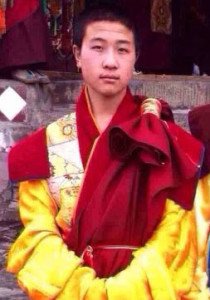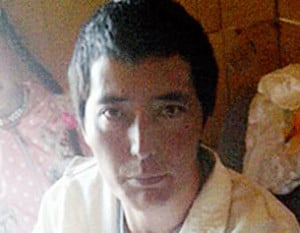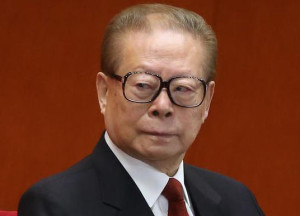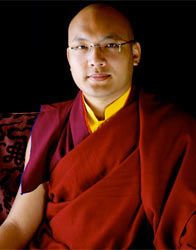Young Tibetan self-immolates; government official calls for information blackout

Tsering Gyal
A young Tibetan monk is believed to have died after self-immolating “for the unity of Tibetans inside and outside Tibet.” Tsering Gyal, a 20-year old monk from the northeastern Tibetan area of Amdo, set fire to himself on November 11 and repeatedly called the name of the Dalai Lama before collapsing in flames.
According to one source, on the way to hospital, “Tsering Gyal said that his self immolation is for the unity of Tibetans inside and outside Tibet. He said that he hoped Tibetans will stand together, facing both difficulties and happiness. He also said that he hoped Tibetans would protect and preserve their language and cultural identity, and said that these were his final expectations and hopes.” His fiery protest is the second self-immolation since July 20, and the 123rd since February 2009.
The devotion felt by Tsering Gyal the solidarity shared with Tibet’s exile community was squarely in the sites of a recent op-ed by the Tibet Autonomous Region’s Party chief, Chen Quanguo, published in a leading Party journal on November 1. Amidst the calls for promoting Communist Party ideology and General Secretary/President Xi Jinping’s vision of a ‘Chinese dream,’ Chen’s focus on greater control over news and communication with the aim of severing Tibetans’ connection with the exile community became clear, “We should try our best to enable the voices and images of the Central Party Committee to be heard and seen in the vast territory of over 1.2 square kilometres, and prevent voices and images of hostile forces and the fourteenth Dalai Lama’s clique from being heard and seen.”

An undated photo of Yonten Sangpo. (RFA)
While Chen’s article focused primarily on controlling the messaging that reaches those in Tibet, the outward flow of information and news from Tibet also continues to face hurdles put in place by the authorities. News of the April release of a Tibetan political prisoner has only now reached outside groups due to the tight communication restrictions in place in Tibetan areas, according to Radio Free Asia. Yonten Sangpo, who was detained in a February 2012, security raid on his home that resulted in the shooting deaths of his two brothers, and injuries to himself, his mother, and children, was released from detention on April 21, 2013. Exemplifying the extra-judicial punishment Tibetans are routinely subjected to, Yonten Sangpo was held for over a year without charge, and continues to struggle with severe jaw and spine injuries he suffered during the raid.
Tibetans detained after calling for release of political prisoners
Tensions continue to remain high in the Tibetan area of Nagchu, where officials detained 15 Tibetans following their peaceful attempts to have a Tibetan writer and his friend released. The writer, Tsultrim Gyaltsen, and his friend, Yugyal, were detained amidst the intense security crackdown in the area that began when local Tibetans protested against order to fly the Chinese flag on October 1, China’s National Day. On October 6, troops opened fire on a group of unarmed Tibetans, injuring at least 60, when they gathered to protest the detention of a Tibetan man who spoke out against raising the Chinese flag.
Former Chinese leaders face arrest following Spanish court ruling

Jiang Zemin
Continuing the potentially groundbreaking legal cases brought against former members of the Chinese leadership, the Spanish National Court ordered arrest warrants to be issued for five former Chinese leaders, including former President and Party Secretary Jiang Zemin, for their part in human rights abuses in Tibet. Separately, the court instructed that former leader Hu Jintao be informed of his indictment and sent questions by way of the Chinese embassy regarding his policies in Tibet. The court’s rulings open the possibility that the former leaders could be extradited to Spain if they travel outside of the People’s Republic of China, or have their access blocked to any foreign bank accounts they may have.
Sikyong meets US leaders in Washington
Sikyong Dr. Lobsang Sangay visited Washington, DC during the week of November 11. He met with Members of Congress, including Senate Majority Leader Harry Reid and Chairman of the House Foreign Affairs Committee Ed Royce, and senior members of the House Judiciary Committee. He also participated in interviews with Voice of America and Radio Free Asia.
Always great seeing Lobsang Sangay, the free leader of #Tibet pic.twitter.com/mNXYgpP42u
— John McCain (@SenJohnMcCain) November 15, 2013
Tibet supporters rally around petition
In a global act of solidarity, over one million Tibet supporters rallied around a petition objecting to China’s appointment to the main human rights body at the United Nations due to the “sustained and systematic repression inflicted on Tibetans.” China’s bid to fill one of the seats on the Human Rights Council (HRC) was uncontested, and it will now join Russia, Cuba, and Saudi Arabia, among others, in serving a three-year term on the 47 member council, beginning January 1, 2014. China’s election to the HRC follows on the heels of close scrutiny of its human rights record under the UN’s Universal Periodic Review process, in which 11 countries directly challenged China on its Tibet policies.
Karmapa opens Himalayan environmental conference

Gyalwang Karmapa
Highlighting the important role the Tibetan monastic community can play in protecting the fragile Himalayan ecosystem, the 17th Karmapa, Ogyen Trinley Dorje, opened the “5th Khoryug Conference on Environmental Protection for Tibetan Buddhist Monasteries and Nunneries in the Himalayas,” in New Delhi, India on November 8. Working in conjunction with the World Wildlife Fund’s Sacred Earth program, the conference brought together monks and nuns from 50 monasteries and nunneries in India, Nepal, and Bhutan to focus on conserving freshwater resources. While organized in exile, the conference demonstrates how a proactive approach by Tibet’s monastic community can work towards protecting the fragile Tibetan environment that serves as one of the main water resources for all of Asia.

